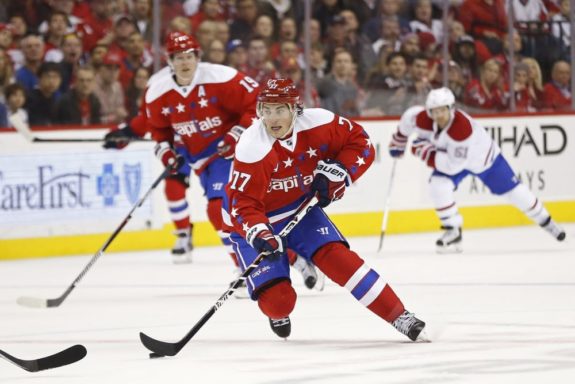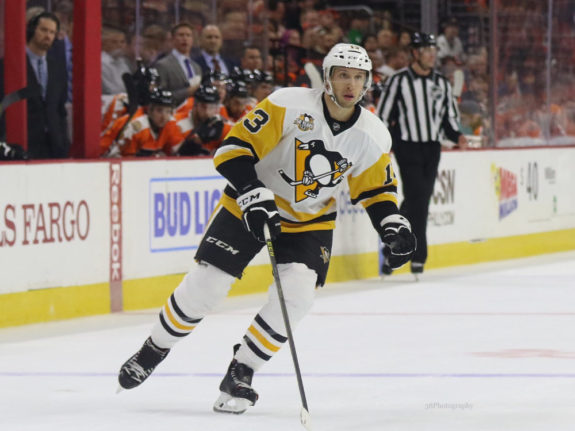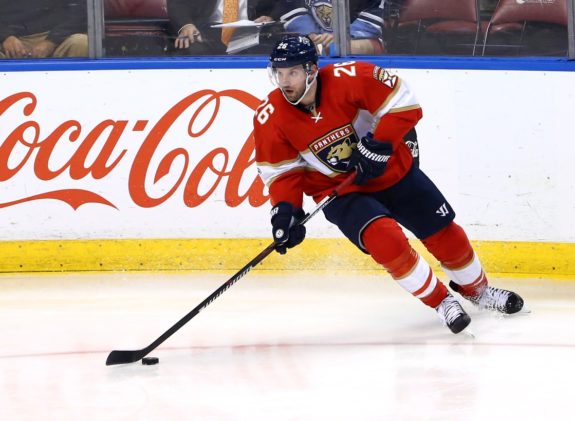While the Stanley Cup playoffs continue to work toward its yearly fever pitch, franchises find themselves sitting in hockey purgatory, waiting to make their next move. Those teams out of the playoff hunt are certainly looking toward how they will be able to rebuild their lineup top-to-bottom to become one of those final four this time next season.
For the Buffalo Sabres, the work is understandably a little more difficult, but quick upgrades on the free agent market are not out of the realm of possibility.
There are a handful of targets that Buffalo can aim for, but three certainly make more sense for a team looking to make the playoff jump next season.
T.J. Oshie
This one qualifies as the “low hanging fruit” for the Sabres. Oshie had the perfect season right at the end of his contract expiration. What a coincidence.
Oshie recorded a career-high 33 goals on a below-average 143 shots. For those lacking in the math department, that equals out to an absurd shooting percentage of 23.1 percent. His career average definitely a cause for concern there.

Despite scoring at least 26 goals in the last two seasons with an offensively-gifted Washington Capitals, Oshie only hit 20-plus goals once in his seven seasons with the St. Louis Blues.
If Buffalo decides to trade Evander Kane, Sam Reinhart or any other top-six forward, Oshie could step in right away and would likely make an immediate impact.
Oshie may end up as the highest paid free agent forward come July 1, but he most certainly comes with a “buyer beware” next to his price tag.
Don’t forget though, Buffalo does love their American heroes.
Nick Bonino
Bonino falls into the category of one of those puzzle pieces that you expect to help push your team over the edge in the Stanley Cup playoffs. Luckily for Bonino, he has the track record to prove he is your guy.
His regular season stats aren’t going to jump off the page at you, most certainly as sexy as like Oshie’s regular season stats will, but Bonino brings something else.
A solid third liner, who can fill whichever role you give to him, which we have learned throughout his two seasons in Pittsburgh.
He also played an integral role in helping the Pittsburgh Penguins win the Stanley Cup in 2015-16, tallying 18 points (four goals, 18 assists) in 24 games.

Due to his postseason success, Bonino will most certainly see a raise from his current hit of $1.9 million per season, but that should not scare too many teams away.
For Buffalo, he seems like a fit due to the bottom-six lacking the proper type of forwards. Also, current Penguins associate general manager Jason Botterill has been reported as the likely candidate for Buffalo’s vacant GM job. This might give the Sabres a head start in negotiations, should they choose to pursue.
Thomas Vanek
Oh, our old friend Thomas Vanek, who is arguably one of the most gifted Sabres forwards we have seen in years.
There is no time like the present for a good ol’ family reunion between Vanek and the Sabres.
We heard rumblings last offseason that he really wanted to come back to Buffalo, but Tim Murray ended up not negotiating and Vanek ended up with the Detroit Red Wings.
Despite likely having a raised price tag, Vanek could be had on a one or two-year deal, which plays to Buffalo’s strength.
We’ve have seen Vanek play first-hand, to the tune of 497 points (254 goals, 243 assists) in 598 games, which means we know his strengths and weaknesses. Vanek would help shore up the Sabres’ issue with scoring shootout goals. His patented slapshot in the shootout is burned into the brains of many goaltenders throughout the league.

On the other hand, we know Vanek often takes shifts off. We have seen Vanek disappear for games at a time, before blowing up for three or four goals.
He has averaged 20.6 goals per season in the last five seasons and with a team that struggles to score goals, it only makes sense to grab a talent like Vanek.
On the other hand, it must be noted that Vanek has benefitted greatly from offensive zone starts. Last season between Detroit and Florida, he averaged starting in the offensive zone a career-high 71.9 percent of the time. That should tell you everything you need to know about his lackluster defensive reputation.
The ultimate questions we have to ask is this — is his reward worth the risk we all have witnessed first-hand?
That is a decision that will ultimately have to be made, but if Vanek comes back and works out with Jack Eichel, will anyone be upset?